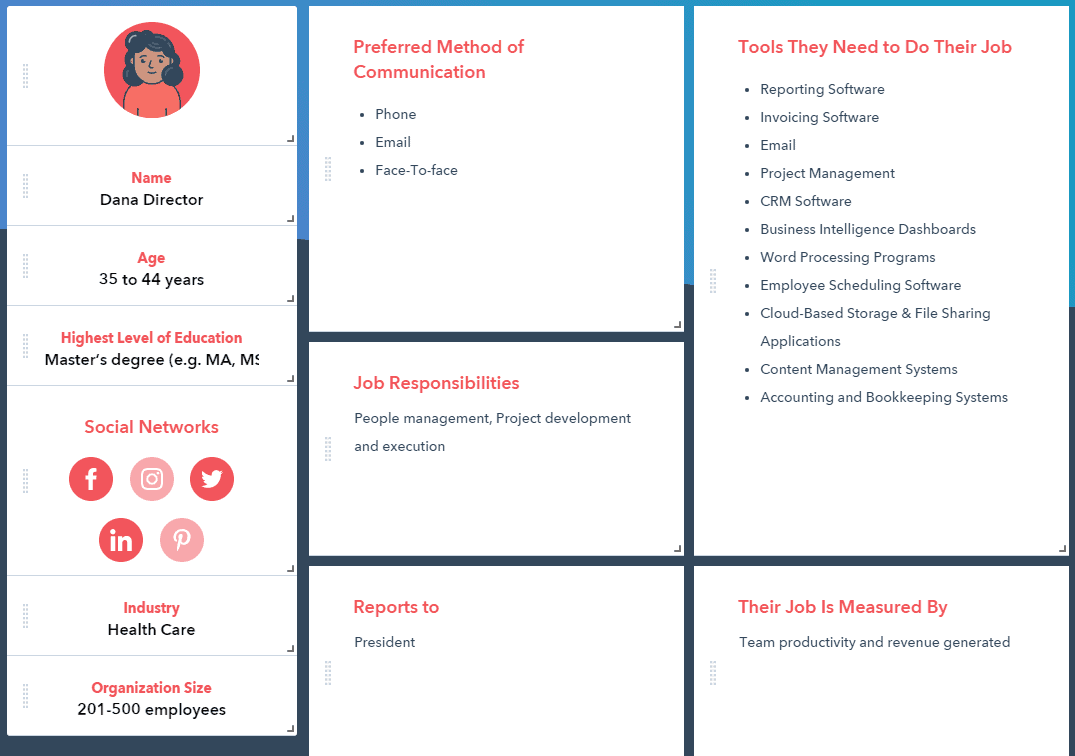Written By: Ceara Hickerson As a B2B professional, you want to place your service and business in front of the correct buyer who you can convert into a trusted customer. This is known as the B2B buyer persona and it can equip your sales and marketing departments with tremendous structures and insights. So, the
Written By: Ceara Hickerson
As a B2B professional, you want to place your service and business in front of the correct buyer who you can convert into a trusted customer. This is known as the B2B buyer persona and it can equip your sales and marketing departments with tremendous structures and insights.
So, the question is
who is your “ideal customer”?
When executed correctly, it allows you to evaluate your approach based on your prospect’s terms – building a bond of trust your competitors will not be able to match. Today, we have a guide that will inform you how to do this.
Learn how to create an actionable, goal-directed B2B buyer persona which acts as your greatest tool. Define and guide your marketing campaigns so they align with your prospect’s buying journey.
Why You Need a B2B Buyer Persona
You can probably guess most if not all of the benefits of having a buyer’s persona for your company. Here are some of the main benefits:
The benefits are a no-brainer–increased lead generation, targeting, conversions and profits.
But before we move on to the steps you need to take to create your B2B buyer persona, let us quickly define what a B2B buyer persona is.
What is a B2B Buyer Persona?
This is the “fictional” or ideal customer who would purchase your product or service. It is the description and characteristics that you would look for in a potential buyer, but it is not all concept, and it is definitely not based on guesswork.
When you understand what potential buyers are thinking when deciding on whether or not to do business with you, you are able to align your marketing, sales, and product/service development with your buyer’s expectations.
You’ll be able to attract the most
valuable leads to your business.
Another note, do not limit yourself to only one B2B buyer persona. Many B2B companies have 4-5 personas depending on the size of the company and the number and complexity of the product or service. Now that you have all of that in mind, it is time to start creating your action plan for your specific buyer persona.
1. Research your ideal buyer’s background
- Who is your ideal customer?
- Where do they work?
- What is their job?
- What services or products do they provide?
- What are their demographic details? This includes age, gender and locations where they belong.
These are good starting points to understand some of the core values and general knowledge about your buyer persona.
2. What are their pain points?
- What problems do your customers have that your service or business can resolve?
Each stakeholder has different challenges. Understand them so that you can tailor your communication accordingly.
3. What are their goals?
- What problems do your customers solve for others?
- How is success measured in their role?
- How will your services or business help them look good in their organization?
Essentially, you want to know what drives these people.
4. What is a day in their work life like?
- What social media platforms do they use?
- When are they most active at work?
- Are they part of professional organizations?
- What type content do they consume on a daily basis and where do they get it from?
- What are their demographic details? This includes age, gender and locations where they belong.
Answering these questions will help you to discover what times to reach out to them and what platforms you should use to contact them.
5. Obstacles to purchase
- Who do they report to?
- What are barriers to the purchase process?
- Are there different levels of approval?
- How urgent are their requests?
- What is their budget?
- Are they seasonal buyers?
Knowing these obstacles will allow you to tackle your buyer’s fears about purchasing, therefore, creating meaningful solutions.
6. Analyze the data and understand where you fit into the equation
How do you collect this data?
- Analyze the information you have on existing clients.
- Ask your sales teams for information about customers and prospects
- Use lead captures to collect information about demographics, job title, company size, etc.
- Interview or survey your customers and prospects
- Once you have all of that data, compile the information into various categories, note trends like shopping preferences, goals, challenges and demographics.
Now you are ready to start creating your B2B buyer persona.

7. Create your B2B buyer persona (s)
It is time to bring the data to life! Give you data names and build a story around each one of them.
There are several tools online to help you organize your data, create your buyer personas and distribute them to your teams.
Here are some examples of useful tools you can use:
SharpSpring’s Persona Card
SharpSpring gives you an intuitive and user-friendly method to create an in-depth persona. It gives you job keywords, demographics and allows you to create a narrative surrounding the persona. You can choose from a drop-down list of avatars to give a face to this persona.
Hubspot’s Make My Persona Tool
This tool from Hubspot is user-friendly and intuitive. All you have to do is begin with an avatar. Then it guides you through a series of steps of describing and listing the major characteristics of your buyer persona. At the end, you can give this persona a name and add it to your categories. It will look something like this when you are done:
Update Your B2B Buyer Persona (s)
Once you create a buyer persona, do not let it sit in a file somewhere. It is now a powerful tool to engage your audience and equip your teams with the knowledge they need to guide customers through the buyer’s journey.
A study shows that 64.7% of companies who exceeded lead and revenue goals have updated their personas within the last 6 months. Times change and so do people. Your buyer persona will change at some point. Expect to make changes to keep your personas relevant and create new ones.
Discover your B2B Buyer Persona.
Get a consultation to develop or re-target your buyer persona for smarter lead generation.




















